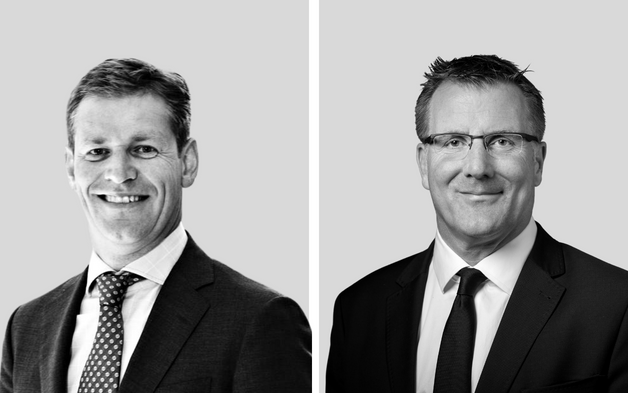The challenges currently outweigh the opportunities in many classes of real assets, and funds have billions in dry powder waiting for better deals, but strong fundamentals will ultimately prevail in the long term, said the head of asset manager Nuveen’s real assets business.
The listed real estate sector was last year “trading at some of the biggest discounts we have seen to reflect the rise in rates and other geopolitical events,” said Mike Sales, chief executive of Nuveen Real Assets. But private assets still need more time.
In a discussion with Patrick Kanters, global head of private investment at APG in the Netherlands, Sales said there is a lot of dry powder sitting on the sidelines–around US$8 billion in Nuveen’s case–waiting for signs of distress or better opportunities.
“We are not investing at the moment unless we see some form of distress, or prices in our calculations reflect where we think the market should be today,” Sales said.
In a panel discussion exploring the benefits of real assets at Conexus Financial’s Fiduciary Investors Symposium held in Singapore, Sales said global population growth may be slowing but it is still a major contributor to the value of land-based resources, with senior housing needs in particular set to rise as the over 80s demographic explodes in the coming 10 to 20 years.
The ongoing digital transformation is driving the need for data centres and logistics which are responsible for enormous growth in real estate and had delivered “incredible returns” over the last five years, he said.
There is also a rising global challenge to provide sustainable food, fibre and timber systems, and offer solutions to the challenge of eliminating net carbon emissions.
However while the sector does offer some level of hedging against inflation, inflation and rising rates have taken their toll by driving up the cost of debt by more than 300 basis points, he said. Patience is currently the game as the full impact of interest rate hikes has yet to sink into some sectors, particularly private real estate.
“Long term they are great asset classes to be in, but the right entry point is important and we’re not quite there yet,” Sales said.
APG–with close to €630 billion in funds under management–invests in real estate, infrastructure and natural capital which includes timber-producing assets and agricultural land, with roughly a third of its real assets portfolio in each of the three regions of Europe, the Americas and Asia-Pacific.
ATTRACTIVE TRANSACTIONS
On the topic of renewable energy, Kanters said APG still sees attractive transactions in the US whereas “in Australia more recently we are being priced out by 20% or so.”
There are some opportunities in renewables for large funds willing to monitor many transactions, stay selective and underwrite some development risk, he said, “but we are far more selective the past two years or so.”
“If you look at how much time I have spent over the last two years instructing the team: ‘You can wait a bit, sit on your hands a bit, the best years are still to come, plant a few small seeds for new platforms to make sure the money is sidelined and is there when the opportunities are there,” Kanters said.
The fund is committed to responsible investing, and “we are convinced we can make money by implementing that properly both regarding physical and transition risk,” Kanters said.
APG has €55 billion of listed and private real estate spread over different sectors, and has been disposing of retail and office assets while favouring alternative real estate such as student housing and healthcare facilities.
The fund’s co-plan strategy demands managers are able to catalyse returns based on one or more mega trend.
“That’s why you see us more and more in alternative real estate,” Kanters said. “That will, in time, become the traditional asset sectors.”
The fund’s natural capital assets are a relatively small portion of the portfolio at about €2.6 billion, and form a part of the fund’s impact investing.



